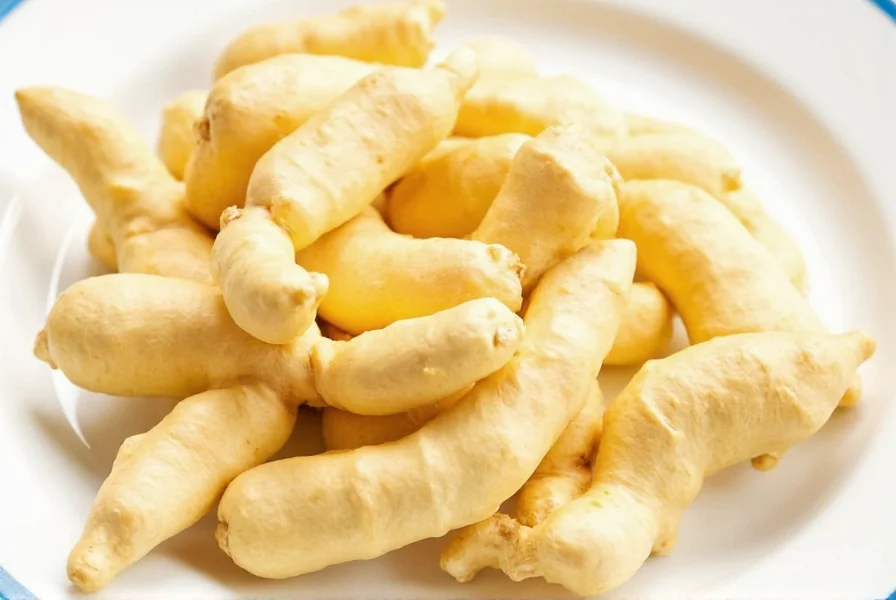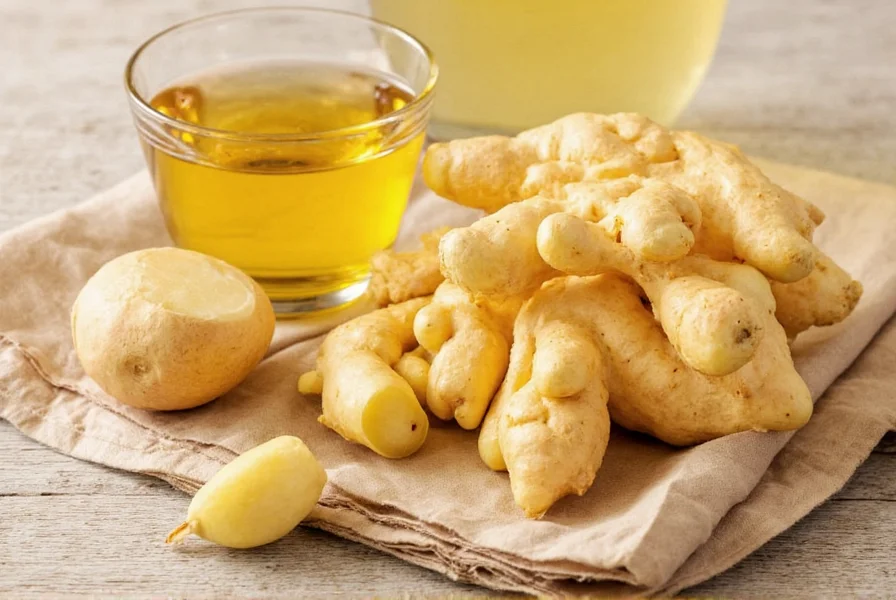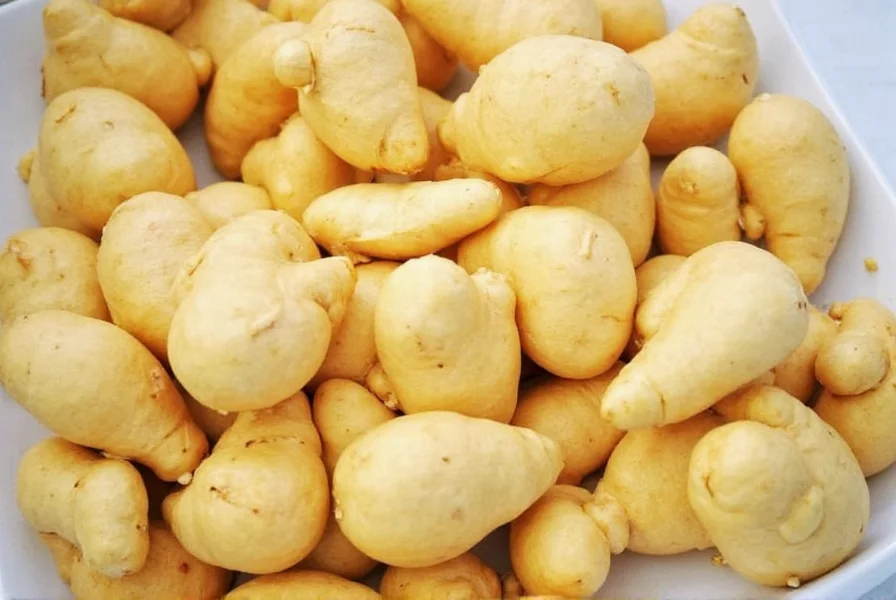When exploring Japanese culinary traditions, understanding the distinct varieties of ginger used in Japan provides valuable insight into authentic flavor profiles and preparation techniques. Unlike the more familiar common ginger found worldwide, Japanese ginger encompasses several specialized types that have been cultivated for centuries to complement the delicate balance of Japanese cuisine.
Understanding Japanese Ginger Varieties
Japan features several unique ginger varieties, each with specific characteristics and culinary applications. The most prominent include:
| Variety | Japanese Name | Characteristics | Season |
|---|---|---|---|
| Myoga | ミョウガ | Delicate floral aroma, mild flavor, edible flower buds and young shoots | Summer (June-August) |
| Shinsho | 新生姜 | Young ginger with thin skin, tender texture, mild heat | Early summer (May-July) |
| Shokyo | 生姜 | Mature ginger with stronger flavor, used medicinally and in cooking | Autumn-Winter |
| Kosho | 古生姜 | Aged ginger with intense flavor, used sparingly | Winter |
Myoga: The Floral Ginger Treasure
Myoga (Zingiber mioga) represents one of Japan's most distinctive ginger varieties, prized for its edible flower buds rather than just the rhizome. This perennial plant produces beautiful pinkish-red flower buds that open into striking yellow flowers. The closed buds offer a delicate floral aroma with subtle ginger notes, making them perfect for garnishing dishes without overwhelming other flavors.
Chefs in traditional Japanese cuisine value myoga for its versatility. Sliced thinly, it adds visual appeal and a refreshing note to miso soup, noodle dishes, and grilled fish. The young shoots also appear in salads and pickles. Unlike common ginger, myoga contains minimal gingerol (the compound responsible for ginger's heat), resulting in a much milder flavor profile that complements rather than dominates dishes.

Culinary Applications Across Japanese Dishes
Japanese ginger varieties serve specific purposes in traditional cooking that differ significantly from how common ginger is used in other cuisines. Understanding these applications helps recreate authentic Japanese flavors:
- Sashimi accompaniment - Thinly sliced shinsho ginger cleanses the palate between different fish varieties
- Miso soup enhancement - Finely minced myoga adds aromatic complexity without overpowering the delicate broth
- Pickling ingredient - Young ginger transforms into pink-hued gari, the traditional sushi accompaniment
- Grilled fish topping - Freshly grated shokyo provides subtle warmth to oily fish like mackerel
- Tea preparation - Dried kosho creates warming beverages during colder months
The timing of ginger addition significantly affects flavor development in Japanese cooking. Chefs typically add myoga at the end of cooking to preserve its delicate aroma, while shokyo enters dishes earlier to allow its stronger flavor to mellow and integrate.
Nutritional Profile and Health Considerations
While all ginger varieties share certain beneficial compounds, Japanese ginger types offer unique nutritional advantages. Myoga contains significant amounts of potassium and vitamin B6, while shinsho provides higher concentrations of gingerol than mature ginger varieties. Research indicates Japanese ginger varieties may support digestive health and provide anti-inflammatory benefits, though these effects differ from common ginger due to varying compound concentrations.
Traditional Japanese medicine (Kampo) utilizes specific ginger preparations for different purposes. Myoga often appears in cooling formulations, while shokyo features in warming remedies. This nuanced approach reflects Japan's sophisticated understanding of ginger's properties across its various growth stages.
Selecting and Storing Japanese Ginger
When seeking authentic Japanese ginger varieties outside Japan, proper selection and storage techniques preserve their delicate qualities:
- Myoga selection - Look for firm, unopened buds with vibrant pinkish-red color; avoid brown spots or soft areas
- Shinsho identification - Choose plump rhizomes with thin, almost translucent skin and minimal fibrous roots
- Storage methods - Wrap in damp paper towel and store in vegetable drawer; use within 3-5 days for peak freshness
- Pickling technique - Traditional Japanese preparation involves soaking in rice vinegar and salt to develop characteristic pink hue
For those unable to find fresh Japanese ginger varieties, frozen myoga buds maintain reasonable quality, while dried shokyo works in soups and stews where fresh texture isn't essential. However, these substitutes never fully replicate the fresh product's delicate flavor profile.
Growing Japanese Ginger Varieties
Gardeners interested in cultivating authentic Japanese ginger should note specific growing requirements. Myoga thrives in partial shade with consistently moist, well-draining soil rich in organic matter. Unlike common ginger, it grows best in cooler temperatures (60-75°F) and requires protection from intense afternoon sun.
Shinsho ginger needs similar conditions to common ginger but benefits from earlier harvest (3-4 months) to maintain its tender texture. Both varieties require careful attention to soil moisture—too dry causes fibrous growth, while too wet promotes rot. In temperate climates, growing these varieties in containers allows for seasonal movement indoors during extreme temperatures.

Distinguishing Japanese Ginger from Common Varieties
Understanding the differences between Japanese ginger varieties and common ginger (Zingiber officinale) prevents culinary mistakes when following authentic Japanese recipes:
- Flavor intensity - Japanese varieties generally milder, with myoga being the most delicate
- Texture - Shinsho and myoga less fibrous, allowing raw consumption without grating
- Culinary role - Japanese varieties often used as featured ingredients rather than background flavoring
- Seasonality - Japanese cuisine emphasizes using specific varieties during their peak seasons
- Preparation methods - Different slicing techniques optimize each variety's unique qualities
Substituting common ginger for Japanese varieties significantly alters dish authenticity. While common ginger works in some applications, it lacks the nuanced flavor profile that makes Japanese ginger indispensable in traditional preparations.
Exploring Authentic Japanese Ginger Recipes
Experiencing Japanese ginger's unique qualities requires trying traditional preparations that showcase each variety's strengths:
- Myoga salad - Thinly sliced myoga with cucumber, wakame, and light soy-vinegar dressing
- Shinsho pickles - Young ginger in sweet rice vinegar, turning naturally pink
- Gari preparation - Traditional sushi ginger using young ginger, rice vinegar, and a touch of sugar
- Miso soup enhancement - Adding myoga just before serving for aromatic finish
- Grilled fish topping - Freshly grated shokyo mixed with soy and mirin for mackerel
These preparations demonstrate why Japanese chefs consider ginger not merely a flavoring but an essential ingredient with seasonal significance. The careful selection of ginger variety based on dish requirements represents a fundamental aspect of Japanese culinary philosophy.
What's the difference between myoga and common ginger?
Myoga (Zingiber mioga) differs significantly from common ginger (Zingiber officinale) in both structure and flavor. While common ginger is primarily used for its rhizome, myoga is valued for its edible flower buds and young shoots. Myoga has a much milder, floral flavor with minimal heat compared to the sharper, more pungent taste of common ginger. The texture is also more delicate, allowing it to be sliced paper-thin for garnishes without becoming fibrous.
When is the best season for Japanese ginger varieties?
Japanese ginger varieties follow specific seasonal patterns. Myoga (flower buds) peaks during summer months (June-August). Shinsho (baby ginger) appears in early summer (May-July) when the rhizomes are young and tender. Shokyo (mature ginger) becomes available in autumn and winter, while kosho (aged ginger) is typically used during the coldest winter months. Traditional Japanese cuisine emphasizes using each variety during its peak season for optimal flavor and texture.
Can I substitute common ginger for Japanese varieties in recipes?
While substitution is possible in some cases, it significantly alters the dish's authenticity. Common ginger has a stronger, more pungent flavor that can overwhelm delicate Japanese dishes designed for milder varieties like myoga or shinsho. For myoga, consider using young ginger shoots or chrysanthemum leaves as alternatives. For shinsho, use very young common ginger with the skin carefully peeled. However, traditional preparations like gari (sushi ginger) require specific Japanese varieties to achieve the proper texture and characteristic pink color.
How should I store Japanese ginger to maintain freshness?
Store Japanese ginger varieties properly to preserve their delicate qualities. Wrap fresh myoga buds or shinsho ginger in a slightly damp paper towel, then place in a perforated plastic bag in the vegetable drawer of your refrigerator. Use within 3-5 days for best quality. Avoid washing until ready to use, as excess moisture accelerates spoilage. For longer storage, freeze myoga buds (they'll lose texture but retain flavor for cooking), or pickle young ginger using traditional Japanese methods with rice vinegar.
What are the primary health benefits of Japanese ginger varieties?
Japanese ginger varieties offer distinct health benefits based on their unique compound profiles. Myoga contains significant potassium and vitamin B6, with milder anti-inflammatory properties suitable for sensitive individuals. Shinsho (baby ginger) provides higher concentrations of gingerol than mature ginger, potentially offering stronger digestive benefits. Traditional Japanese medicine utilizes different varieties for specific purposes—myoga in cooling formulations and shokyo in warming remedies—demonstrating Japan's sophisticated understanding of ginger's therapeutic applications across growth stages.











 浙公网安备
33010002000092号
浙公网安备
33010002000092号 浙B2-20120091-4
浙B2-20120091-4